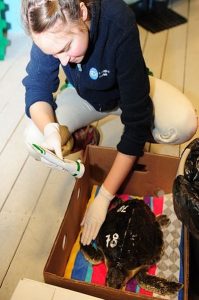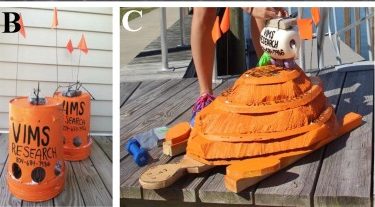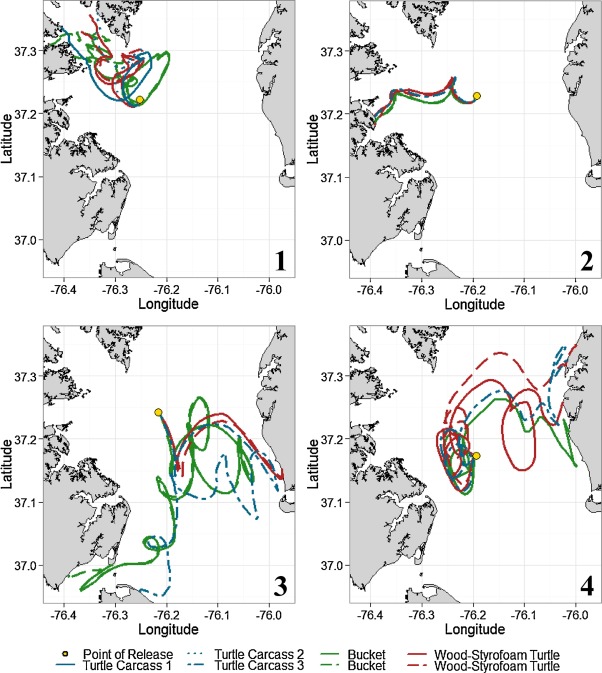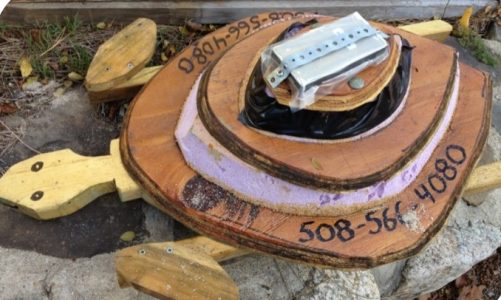Better Understanding of Sea Turtle Strandings
The sea turtles residing in Cape Cod Bay each fall are often trapped and fail to migrate into warmer waters. As they become “cold stunned”, they are no longer able to swim and often wash ashore stranded. Their fate, whether that be washing ashore or leaving the bay to warmer waters, depends on Cape Cod Bay’s ocean currents, wind, and waves.
One of our objectives has been to validate the local ocean models so that we can hindcast the circulation and then attempt to explain the strandings in the past.

Research
In 2015, Bianca Santos (Virginia Institute of Marine Science) fitted a loggerhead carcass with a transmitter, compared the drift of these along with a bucket drifter, and wrote a paper on the results.
Bianca S. Santos, David M. Kaplan, Marjorie A.M. Friedrichs, Susan G. Barco, Katherine L. Mansfield, James P. Manning, Consequences of drift and carcass decomposition for estimating sea turtle mortality hotspots, In Ecological Indicators, Volume 84, 2018, Pages 319-336, ISSN 1470-160X, https://doi.org/10.1016/j.ecolind.2017.08.064
Image to right: bucket and turtle drifters used in the study.


Image to left: results of the drifter release.

